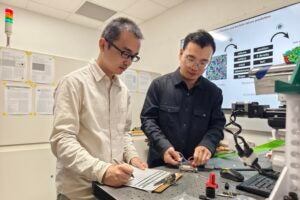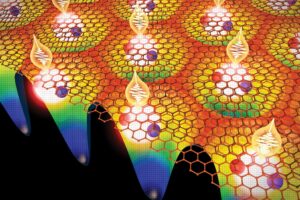Sunday, July 20, marked 45 years since the United States put the first two astronauts safely on the moon. The cost for the Mercury, Gemini and Apollo programs was more than $25 billion at the time more like $110 billion in today’s world. The ensuing U.S. space efforts have cost an additional $196 billion for the shuttle and $50 billion for the space station. NASA’s total inflation-adjusted costs have been more than $900 billion since its creation in 1958 through 2014 (more than $16 billion per year). Looking back, have we gotten our money’s worth from the investment? I say yes.
Some argue that spending money on space is not a good investment, or that it is a luxury that we cannot afford. I believe that space exploration is a very sound investment. NASA’s 2015 budget is $17.5 billion. It is estimated that the total economic benefit of each dollar spent on the space program has been between $8 and $10. Compare that to Americans spending more than $35 billion a year on pizza or the national total annual economic cost of tobacco exceeding $250 billion and you can see that our return on our NASA investment is rather high.
The space race was technological focus that accelerated advances in multiple areas of science, technology and medicine without a shooting war. This is almost without precedent in history. We have recently created a unique international research facility, the International Space Station. It’s hard to put a monetary value on international cooperation, but the space station has recently been the focus of a nomination campaign for the Nobel Peace Prize.
Technologies have been driven by space exploration as well. For space equipment, mass is paramount. Putting a kilogram of payload (instruments, astronauts, supplies) in Earth orbit is costly, and sending it beyond Earth orbit is even more expensive. In the 1960s, there were two options, miniaturize or create huge boosters. The U.S. chose to miniaturize wherever possible while the Russians focused on huge boosters. The Apollo guidance computer was the great grandfather of the microcomputer. It weighed 70 pounds, required 55 watts of power, and had less than 40 KB of memory in a day when most computers weighed tons, filled rooms and needed their own air-conditioning systems. It had less capability than many of today’s electronic wristwatches, but it took us to the moon and back. Its descendants are today’s laptops, tablets, GPS receivers and cellphones. Today, the trend for such devices is to make them ever smaller, ever more capable a trend driven by the space program.
Almost every area of technology has benefitted from space research. Clothes and vehicle interiors are more fire resistant because of research after the Apollo fire. Weather forecasting is much more accurate because of satellite monitoring. Monitoring from space can detect forest fires, oil spills, aquifer depletion, downed aircraft, etc. We have recently watched the World Cup matches from Brazil in near real-time via satellite feed. We can surf the Internet with laptop or tablet while flying in an airplane almost anywhere in the world. We are more connected than ever, both in our everyday activities and in emergency situations.
Medicine has been revolutionized by the space program. We learned to monitor orbiting astronauts pioneering telemedicine and leading to unprecedented improvements in patient monitoring, in and out of hospitals. Research into astronaut bone calcium loss has led to better understanding and treatment of osteoporosis. Digital mammography is a direct application of space data reduction processes. Baby foods are more healthful because of astronaut food research.
There are few other public activities with such a sustained level of performance and impact. Why? Because the space race was a unique event in history. However, in order to remain relevant, NASA needs to have a driving focus a mission. The space around Earth contains a huge number of asteroids. We are very much overdue, at least statistically, for a large asteroid to strike the planet. The last large asteroid killed off the dinosaurs 65 million years ago. Would protecting Earth and saving civilization be a sufficiently important mission?
Wallace Fowler is the director of the Texas Space Grant Consortium and a professor of aerospace engineering and engineering mechanics in the Cockrell School of Engineering at The University of Texas at Austin.
A version of this op-ed appeared in the Fort Worth Star Telegram, The Alcalde, Houston Chronicle, Austin American Statesman, The Monitor and the Corpus Christi Caller Times.



